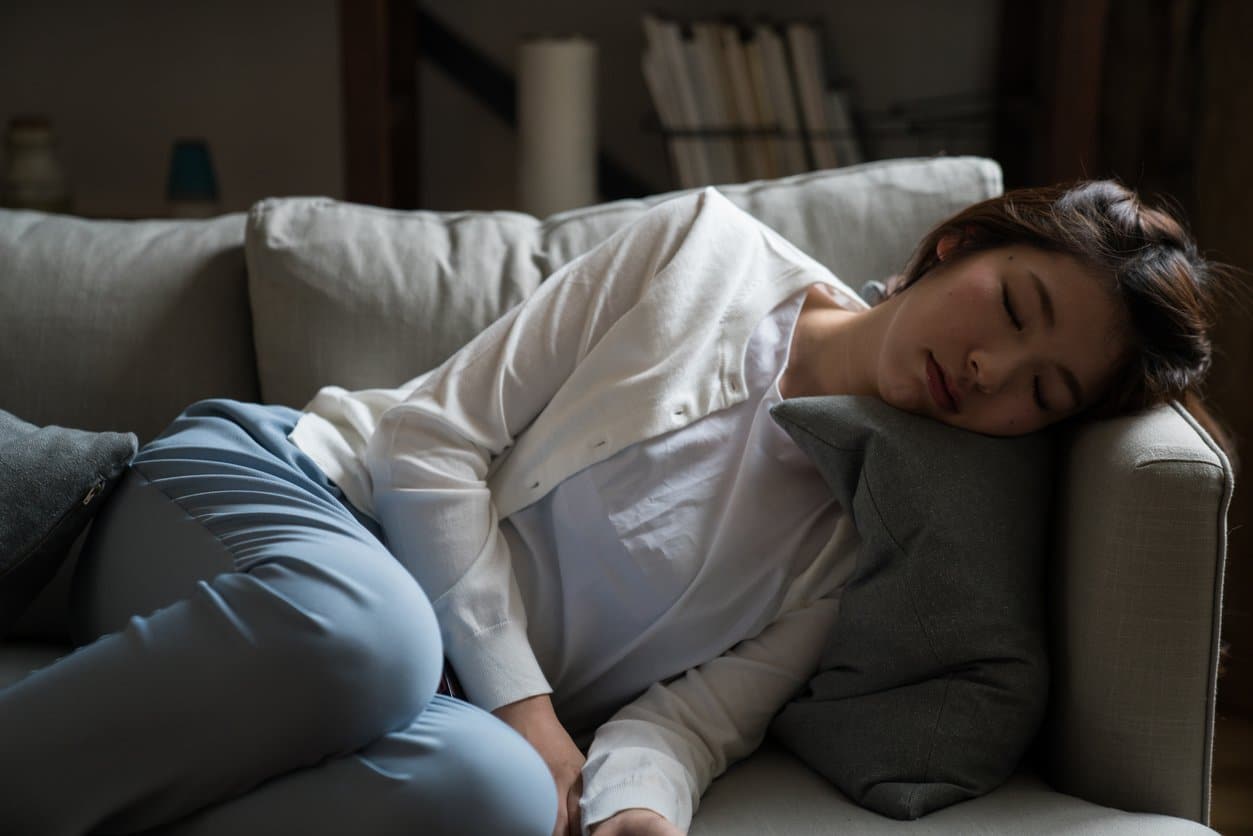It’s not unusual to feel a mid-day slump at work. If you’ve been investigating ways to combat your fatigue, you’ve likely found numerous sources that recommend recharging your batteries with caffeine, a brisk walk down the hall, or maybe a mid-day snack.
Although this type of advice seems logical, many workers find they still feel tired, unfocused, and unable to concentrate despite their best efforts. That afternoon energy drain can have a significant impact on productivity and job satisfaction.
If your fatigue-busting efforts are not producing the results you were hoping for, you may find it helpful to know you are not alone. Many people who spend their days under the harsh glare of artificial lights feel as if their bodies and brains are slowly shutting down.
If your job requires you to spend a substantial amount of time indoors, consider the following five ways workplace lighting can make you feel tired.
Table of Contents
Five Ways Artificial Light Contributes to Workplace Fatigue
The invention of artificial lighting has eliminated the need to plan our days around the rising and setting of the sun. Technological evolution has significant advantages. However, the light emitted from artificial sources can affect our bodies quite differently than natural light.
Natural sunlight contains all the colors within the visible light spectrum. Each color radiates with equal intensity. Your exposure to natural light helps your body synthesize essential vitamins, influences your moods and emotions, and helps regulate your sleep cycles.
Artificial light, particularly fluorescent light, disburses a narrow range of visible light from the electromagnetic spectrum. Research shows that spending a significant portion of your day in artificial light can have a negative impact on your overall health and wellbeing. Many of the effects of artificial light contribute to fatigue. Consider the value of the following observations.
#1 Workplace Lighting Can Disrupt Your Circadian Rhythms

Your sleep cycles are regulated by your circadian rhythms. Your circadian rhythms are regulated by the rising and setting of the sun. If you’re spending a significant portion of your day under the glare of workplace lighting, you may find it increasingly difficult to fall asleep, particularly if you work in a room without windows.
Fluorescent and LED light can interrupt your circadian rhythms by delaying the production of melatonin, your natural sleep hormone. Your circadian rhythms also regulate your:
- Heart rate and blood pressure
- Moods and emotions
- Hormone production
- Urine production
- Thermoregulation and metabolism
Typically, your body starts producing melatonin about 2 hours before you fall asleep and stops producing the hormone about 2 hours before you wake. Depending on your work schedule, the lights in your office could be delaying when your body starts producing melatonin. This delay potentially disrupts your sleep/wake cycles. That means you could be spending more time in bed, unable to fall asleep.
A delay in the start of melatonin production could also mean your body still produces this essential sleep hormone for several hours after you wake. If your body is still producing melatonin in the morning, you may feel tired early in the day when you would expect to feel alert and refreshed.
#2 Fluorescent Light Can Send Chaotic Visual Signals to Your Brain
Although there have been significant improvements to fluorescent lighting to reduce the hum and annoying flicker, it’s important to know that even “flicker-free” fluorescent lights send chaotic signals to your brain. This subliminal flicker cannot be perceived by your eyes. For those who are sensitive, these chaotic signals can cause headaches, fatigue, and can even trigger migraine attacks. If sensitivity to the flicker of fluorescent lighting is causing you to feel tired at work, you may also notice some of these uncomfortable symptoms:
- Increased irritability
- Eye, neck, or shoulder pain
- Heightened anxiety levels
- Reduced ability to concentrate or focus
- Disorientation or confusion
You might also be one of numerous people who find that the subliminal flicker of fluorescent lights also contributes to light sensitivity (photophobia) and eye strain. If you are, you may find that your symptoms can progress over time. Those who are sensitive often find their sensitivity levels get better or worse depending on the color spectrum of individual lighting units or the angle of the light.
#3 Overhead Lights Can Compound the Effects of Computers Screens
Your overhead workplace lighting is likely not the only light source contributing to mid-day fatigue. Although there are significant advantages to our use of digital communication, the effects of artificial workplace lighting are often compounded by the effects of computer screens, tablets, or cell phones.
These electronic devices use LED lights, a source of disruptive blue light. The constant influx of blue light from the computer screen at your workstation can substantially impact your overall health and well-being. Some of the effects can directly impact your energy levels. Research shows that the light emitted from the screens of your electronic devices can cause:
- Sleep disruptions
- Tired, aching eyes
- Light sensitivity
- Heightened anxiety
- Neck and shoulder pain
Tired eyes, shoulder pain, and light sensitivity will understandably contribute to workplace fatigue. You may be able to minimize the potentially detrimental effects of blue light exposure and digital eye strain. Try to increase the refresh rate on your screen, reduce screen brightness, or tilt your screen to minimize the glare from lights overhead. It is also helpful to look away from your computer screen every 20 minutes to rest your eyes.
#4 Fluorescent Light Can Cause Fatigue-Inducing Glare
The harsh, unforgiving glare of fluorescent lighting is light scattering across your field of vision. This causes poor image quality. As a result, your retinas have to work harder to bring the image into focus. Since your retinas work harder to clarify the image, you will likely notice considerable strain on your eyes, particularly if the glare is compounded from working in front of a computer screen. In addition to contributing to fatigue-invoking glare, fluorescent lights are also shown to:
- Cause headaches
- Trigger migraine attacks
- Trigger lupus and fibromyalgia flares
- Interfere with concentration and focus
- Slow your metabolism (by disrupting circadian rhythms)
- Disrupt your immune system
- Contribute to stress and anxiety
- Disrupt menstrual cycles (by disrupting circadian rhythms)
Not everyone is sensitive to the effects of fluorescent lighting, but many people are. Even if you are not particularly vulnerable, it’s important to know that fluorescent lights can have a considerable impact on the health of your eyes and skin.
Although fluorescent lights have a protective phosphorus coating to absorb UV radiation, this coating can breakdown with age. Research suggests UV exposure from fluorescent lights can increase your risk of eye disease as much as 12 percent. Indoor UV exposure can also damage skin cell DNA, contributing to premature skin aging and an increased risk of skin cancer.
#5 Artificial Light is Shown to Impair Energy Production
The little energy-producing powerhouses in your cells are called mitochondria. Your mitochondria evolved over millions of years to utilize the energy of the sun, full-spectrum light, to produce a substance called ATP (adenosine triphosphate). ATP provides the energy needed to power your body.
Research shows that as little as six hours of exposure to the light emitted from computer screens, LED lights, compact fluorescent light bulbs (CFL), and many overhead fluorescent light fixtures impair your mitochondria’s ability to produce energy efficiently. As exposure continues, the rate of decline increases. The reduction in energy production is believed to be caused by damage to the cell’s DNA.
Although most people may not notice the effects of mitochondrial damage, people living with chronic fatigue syndrome are shown to have reduced mitochondrial function. Although artificial lighting is not believed to cause chronic fatigue syndrome, it’s easy to see how mitochondrial damage can contribute to general fatigue. To combat the fatigue-producing potential of mitochondrial damage, consider the benefits of the following suggestions:
- Invest in incandescent lighting or fluorescent light filters for your work area
- Take frequent breaks outdoors
- Move your desk near a window
- Counteract exposure with a red LED light 10-15 minutes each day
Artificial light sources are believed to negatively affect cell mitochondria because they lack the multiple wavelengths and frequencies found in natural sunlight and amplify some frequencies of the color spectrum. If you are living with chronic fatigue syndrome or any other condition that depletes mitochondrial function, consider the potential benefits of installing a filter to create full-spectrum (white) light.
Why do Fluorescent Lights Make Me Tired?
- Circadian rhythm disruption – get more full spectrum light from light filters.
- Subliminal flicker – Can be lessened with light filters.
- Compounding digital eyestrain – Natural light filters help.
- Glare from the light reflection – stop glare with filters.
- Impaired energy production – balance the color spectrum.
How do you fix the lighting problem?
Transforming Your Workplace Lighting Could Significantly Reduce Fatigue
If you battle frequent fatigue at work, you can easily transform the harsh, fatigue-inducing light in your workspace.
The simplest solution is to install affordable fluorescent light filters. Of course, not all light covers are the same. While investigating your options, you will want to find a product that does more than soften the light. The best fluorescent filters:
- Transform lights with a limited color spectrum to full-spectrum white light
- Block harmful ultraviolet (UV) rays
- Eliminate fatigue-inducing glare
- Are affordable and easy to install
For the most advanced fluorescent light covers in the industry, choose Make Great Light. Our fluorescent light covers and tube filters block harmful UV radiation, eliminate glare, and transform fluorescent light to more natural, full-spectrum light.
Watch this video…
Also Read…
Are Your and Your Staff Getting Enough Full-Spectrum Light?
Are Productivity and Morale Down in Your Office? Take a Look at Your Lights
Sources
Low-Energy Lighting and Chronic Fatigue Syndrome (CFS/ME)
https://www.sciencedirect.com/science/article/pii/S0042698906005669
https://greatist.com/happiness/28-scientifically-proven-ways-boost-energy-instantly#environment
https://ehs.utah.edu/environmental-programs/indoor-environmental-quality/lighting
http://ergonomics.about.com/od/lighting/a/How-Fluorescent-Lights-Affect-You-And-Your-Health.htm
https://www.psychologytoday.com/us/blog/people-places-and-things/201907/natural-light-good-light
